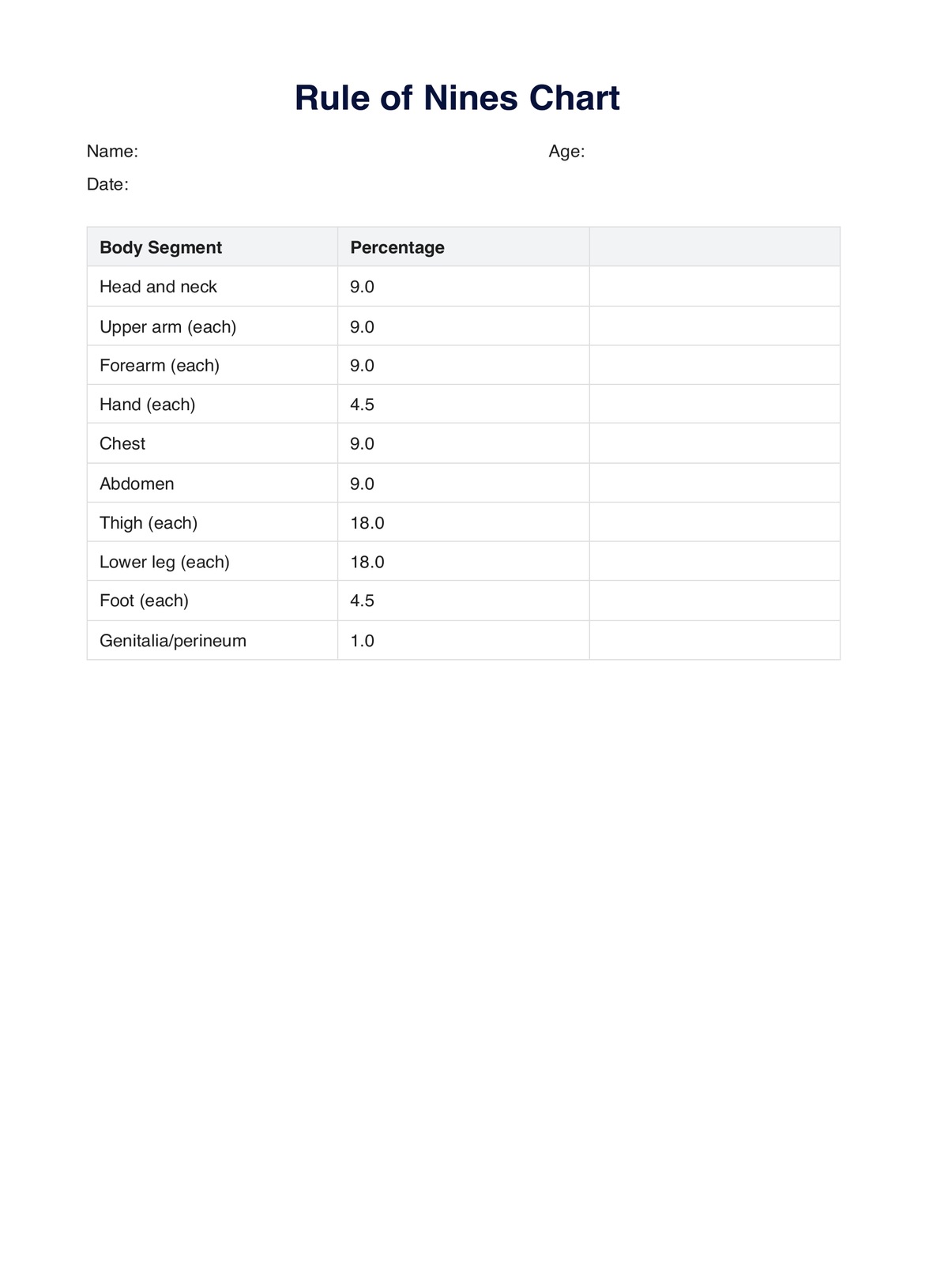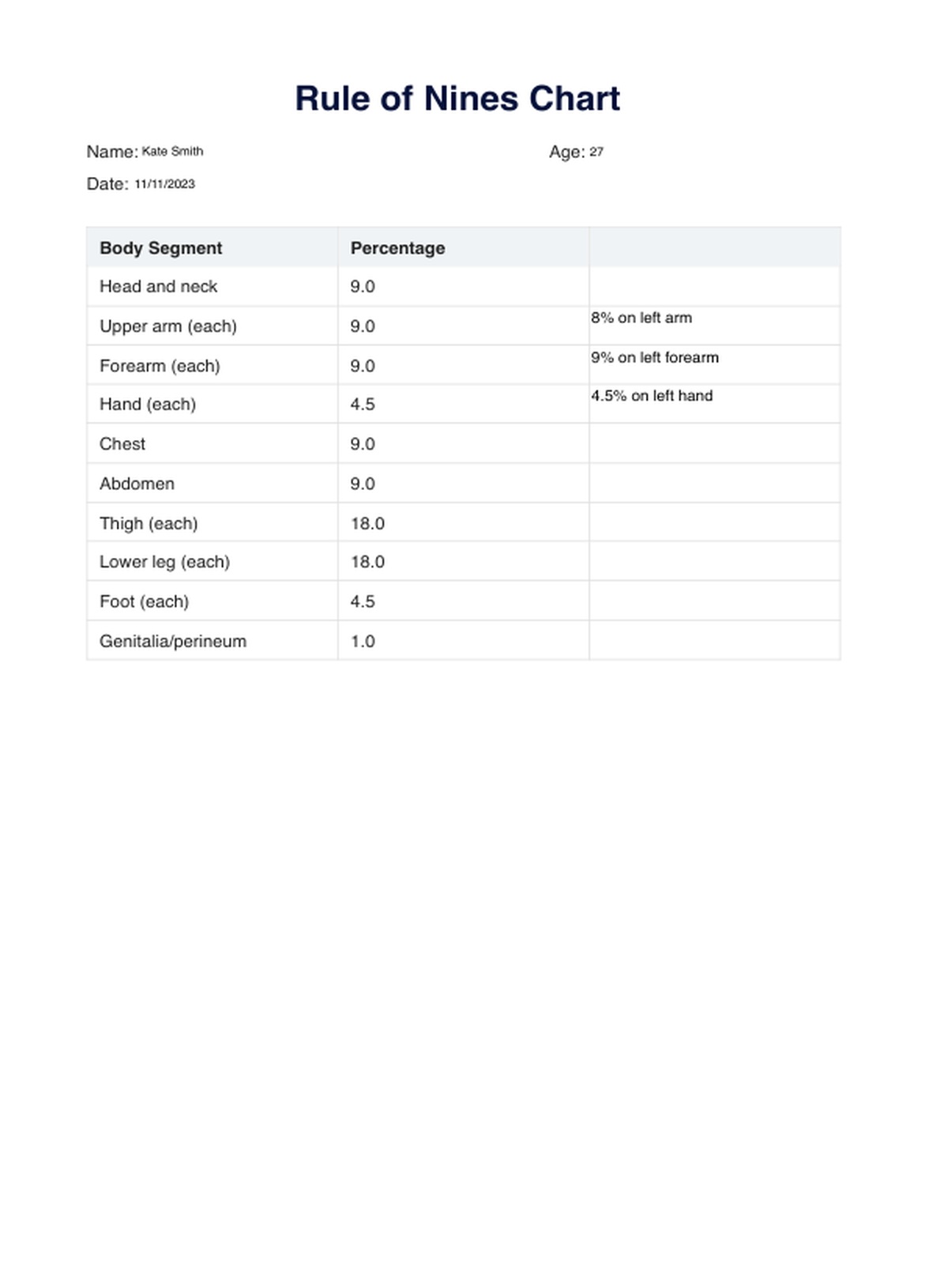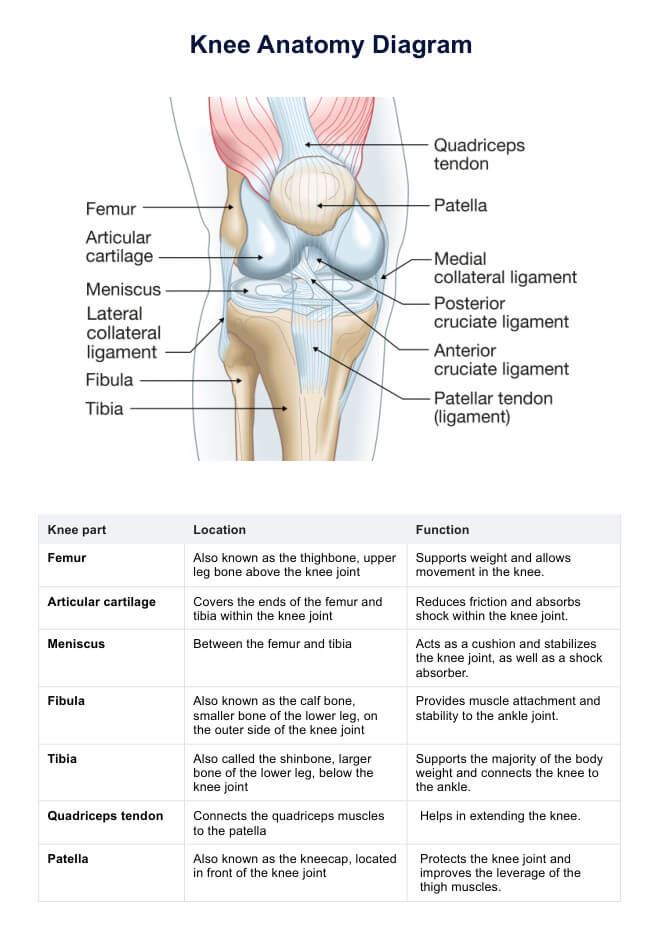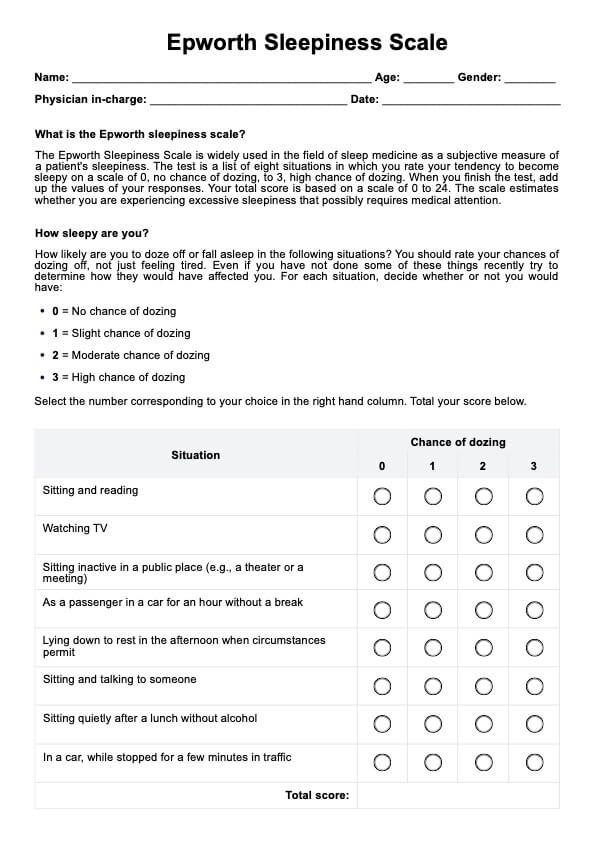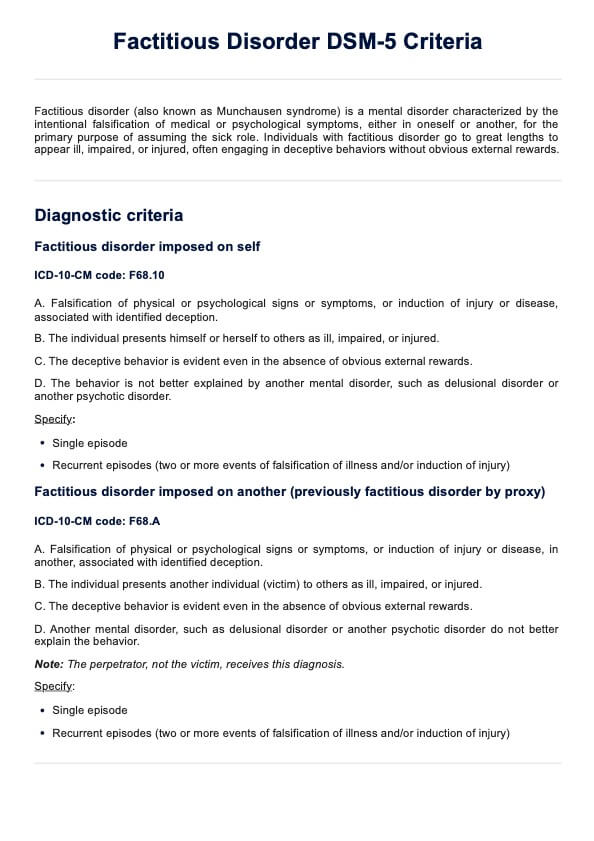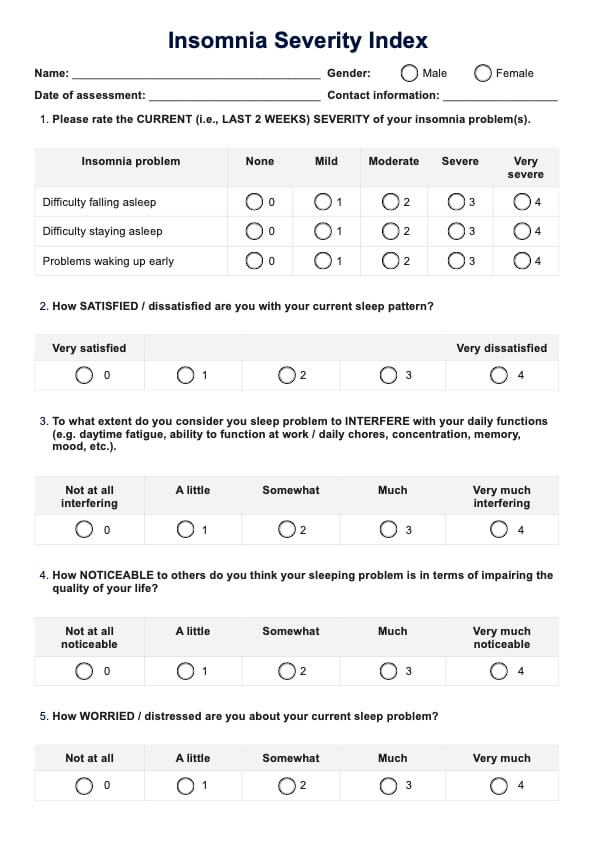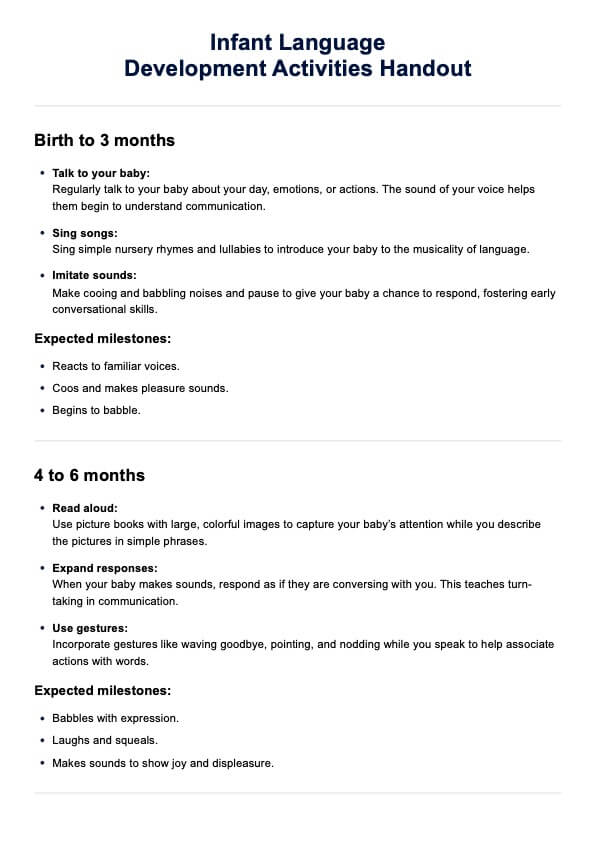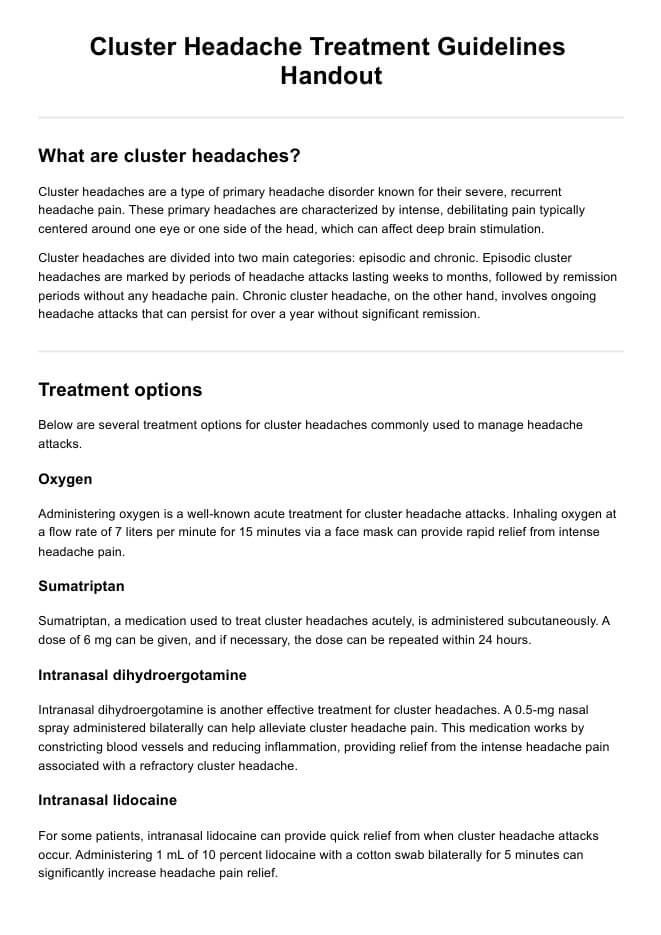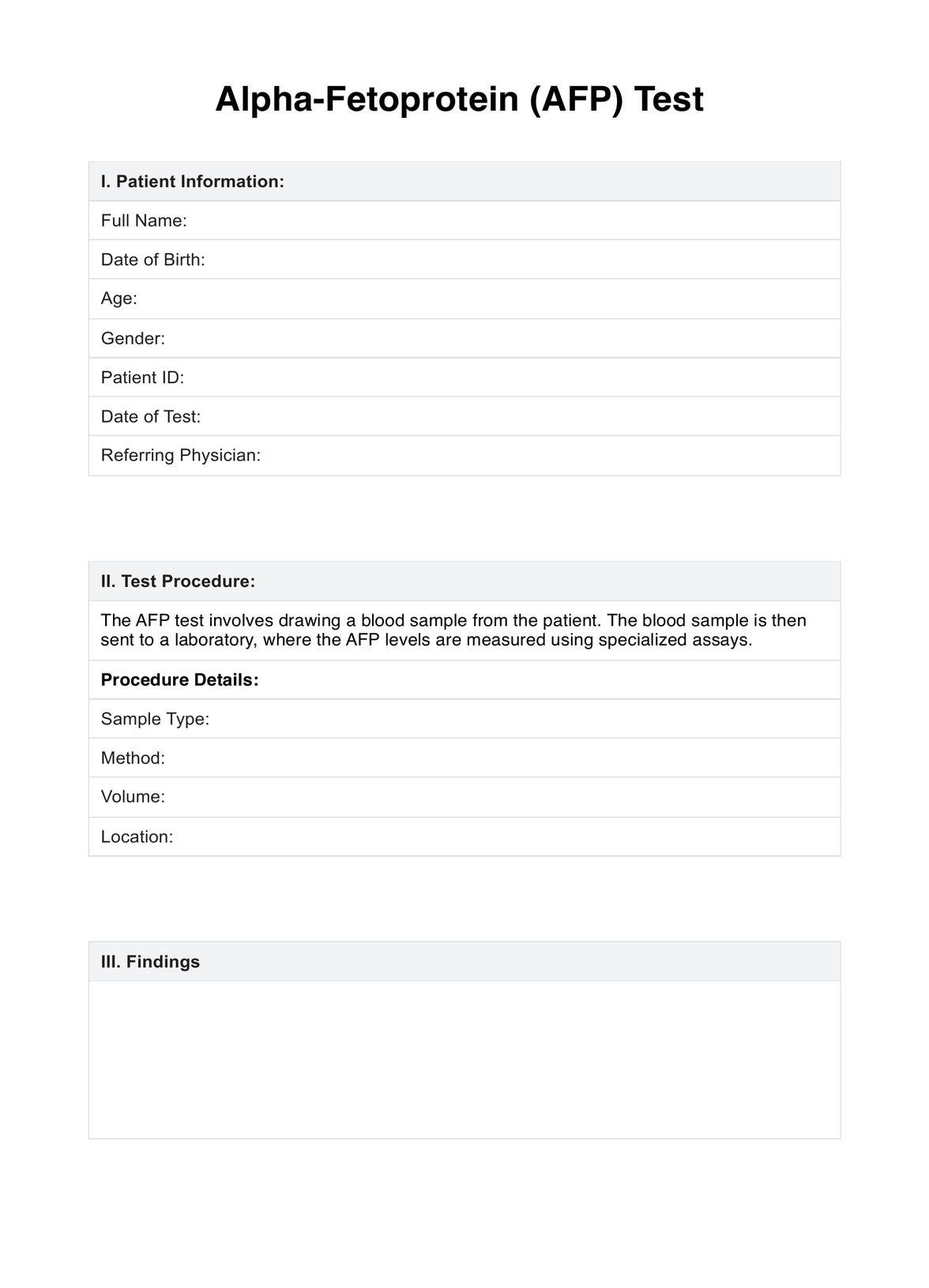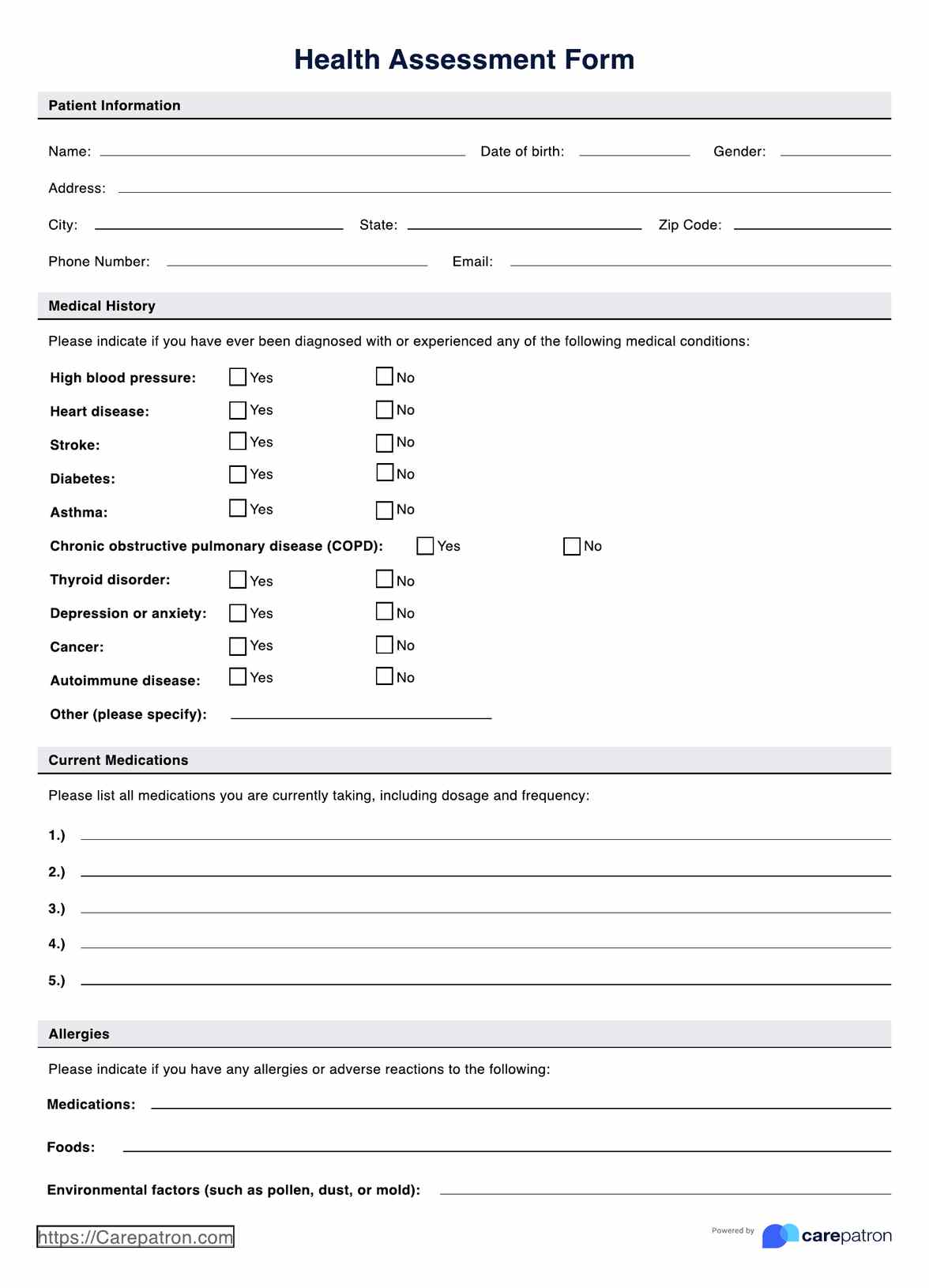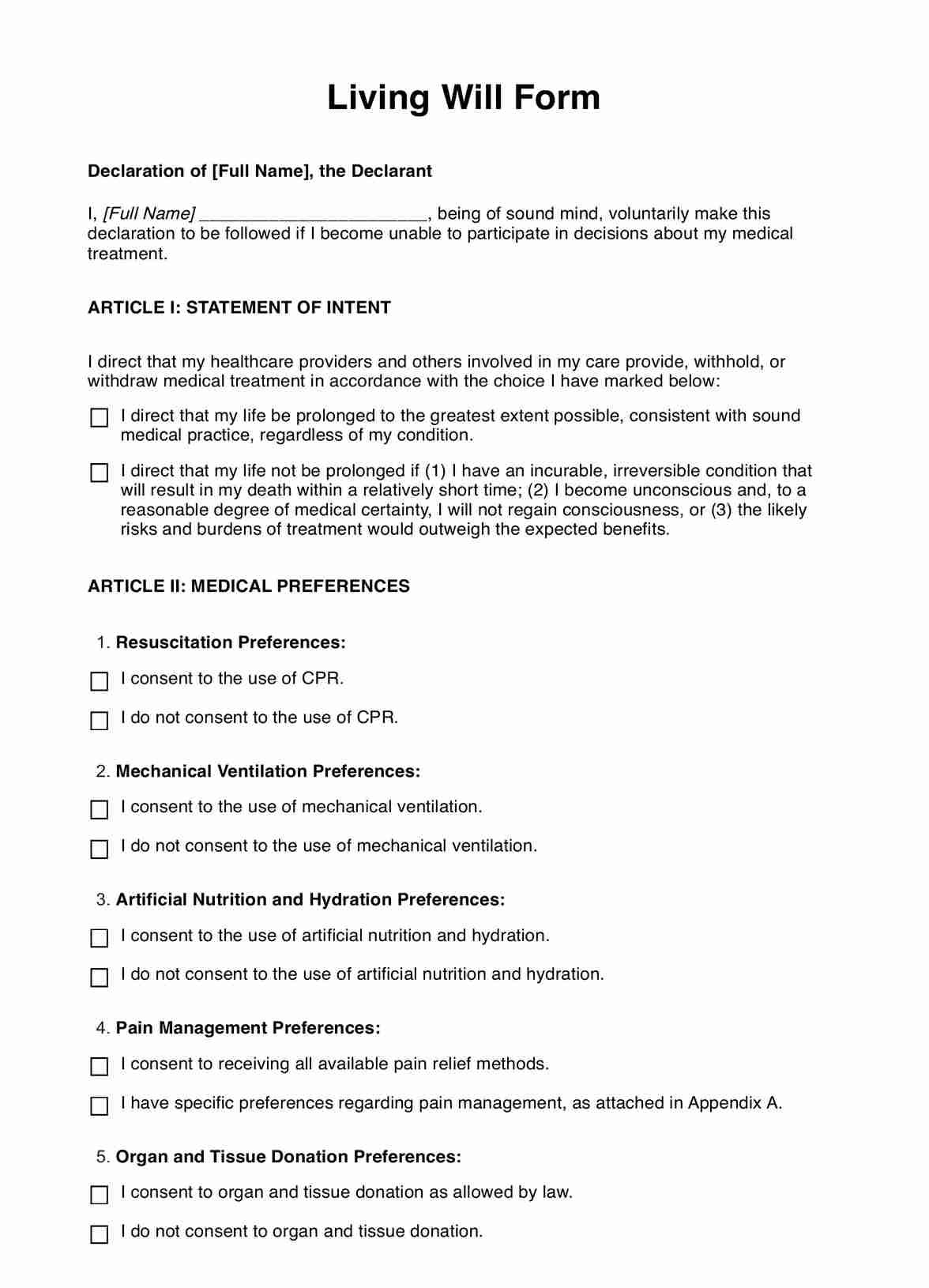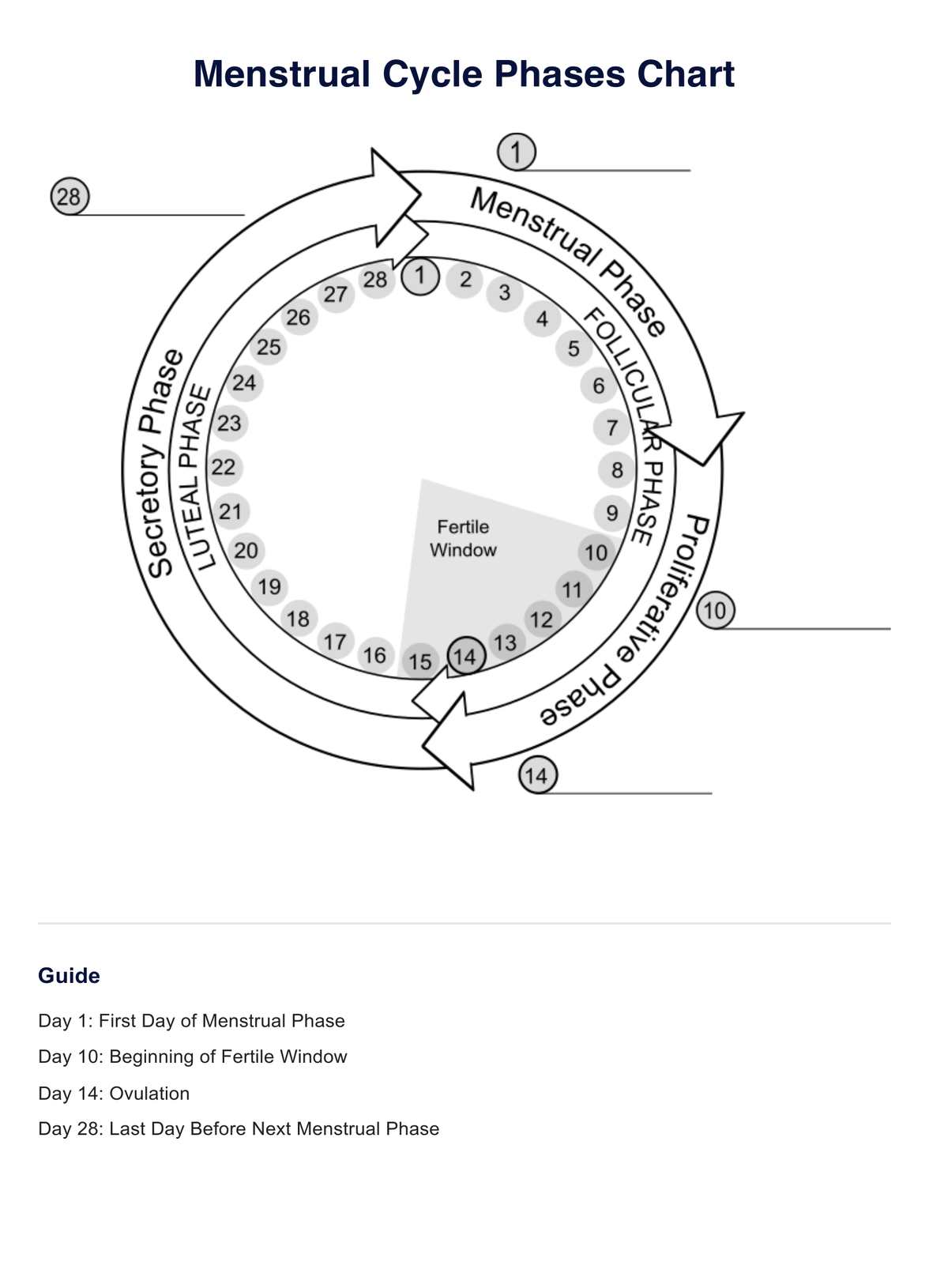Rule Of Nines Chart
Streamline burn injury assessments with our Rule of Nines Chart template for accurate and efficient documentation.


What is the rule of nines?
The rule of nines, also known as the Wallace Rule of Nines, is a widely used method for quickly estimating the total body surface area (TBSA) affected by burn injuries (Hettiaratchy & Papini, 2004). This tool is handy in the initial management of burn patients, as it helps healthcare practitioners assess the severity of the burns and guide treatment decisions.
The rule of nines is a tool that divides the body into areas representing approximately 9% of the total body surface area. The percentages assigned to different body parts are as follows:
- Head and neck: 9%
- Each arm: 9%
- Chest (anterior): 9%
- Abdomen (anterior): 9%
- Upper back (posterior): 9%
- Lower back and buttocks (posterior): 9%
- Each leg: 18% (9% anterior, 9% posterior)
- Genitalia and perineum: 1%
Assessing the extent of the burn injury in each of these areas helps healthcare practitioners quickly estimate the total percentage of body surface area affected.
Rule Of Nines Chart Template
Rule Of Nines Chart Example
What is a Rule of Nines Chart?
A Rule of Nines Chart template is a visual aid designed to assist medical professionals in swiftly assessing the extent of burn injuries on a patient's major body segments. The template simplifies determining the burn's severity by summing up the percentages of the burn surface area.
This template usually features anterior and posterior views of the human body, with clearly marked percentages for each body part.
Having such a template on hand can be valuable in emergencies, as it enables healthcare providers to quickly evaluate the seriousness of the burn injury and make well-informed choices regarding treatment options, including fluid resuscitation and wound care.
How does the Rule of Nines Chart work?
The Rule of Nines Chart is a straightforward tool that healthcare practitioners can use to measure the burn area within a patient. Here's how you can use the Rule of Nines Chart in practice:
Step 1: Assess the extent of the burn injury
Examine the patient's body and identify the areas affected by the burn. Pay close attention to the depth of the burn (e.g., partial thickness or full thickness burns, or second-degree or third-degree burns) and the presence of any circumferential burns.
Step 2: Refer to the Rule of Nines Chart
Use the Rule of Nines Chart to determine the burn size in each body region.
Step 3: Calculate the total percentage of total body surface area affected
Add up the percentages of the affected areas to determine the total percentage of TBSA involved in the burn injury. For example, if the entire right arm (9%) and the anterior chest (9%) are burned, the TBSA affected would be 18%.
Step 4: Use the TBSA percentage to guide treatment decisions
The percentage of TBSA affected by the burn and other factors, such as the patient's age and overall health, can help guide treatment decisions. For example, burns covering more than 20% TBSA may require fluid resuscitation to prevent hypovolemic shock. The American Burn Association (2023) provides guidelines for managing burn patients based on the severity of the injury.
What do the results mean?
Understanding the results of the chart is crucial for providing effective care. Learning the surface area is important because this classifies the severity of a burn. The most commonly used classification system is the Parkland formula, which categorizes burns as:
- Minor (less than 10% TBSA): Typically requires outpatient care and may not require hospitalization.
- Moderate (10-20% TBSA): Typically requires hospitalization and may need wound care, pain management, and emergency medicine.
- Severe (more than 20% TBSA): Severe burns typically require intensive care and may require surgical intervention, wound care, and pain management.
Commonly asked questions
The rule of nines is a guideline used to estimate the percentage of body surface area (BSA) burned in a burn injury. It divides the body into nine areas, representing 9% of the total BSA. The rule of nines is used to calculate the severity of a burn injury and guide treatment decisions.
The rules of burn calculation involve using the rule of nines to estimate the body surface area (BSA) burned percentage. The calculation includes adding the percentage of BSA burned in each area and multiplying by the total BSA. The resulting percentage is used to determine the severity of the burn injury and guide treatment decisions.
The pediatric rule of nimes is a modified version of the rule of nines specifically designed for children. It considers children's unique anatomy and physiology, including their smaller body size and higher surface-to-volume ratio. The pediatric rule of nines divides the body into different areas based on age and body size, allowing for more accurate estimates of BSA burned in children.


